The Wave Camper
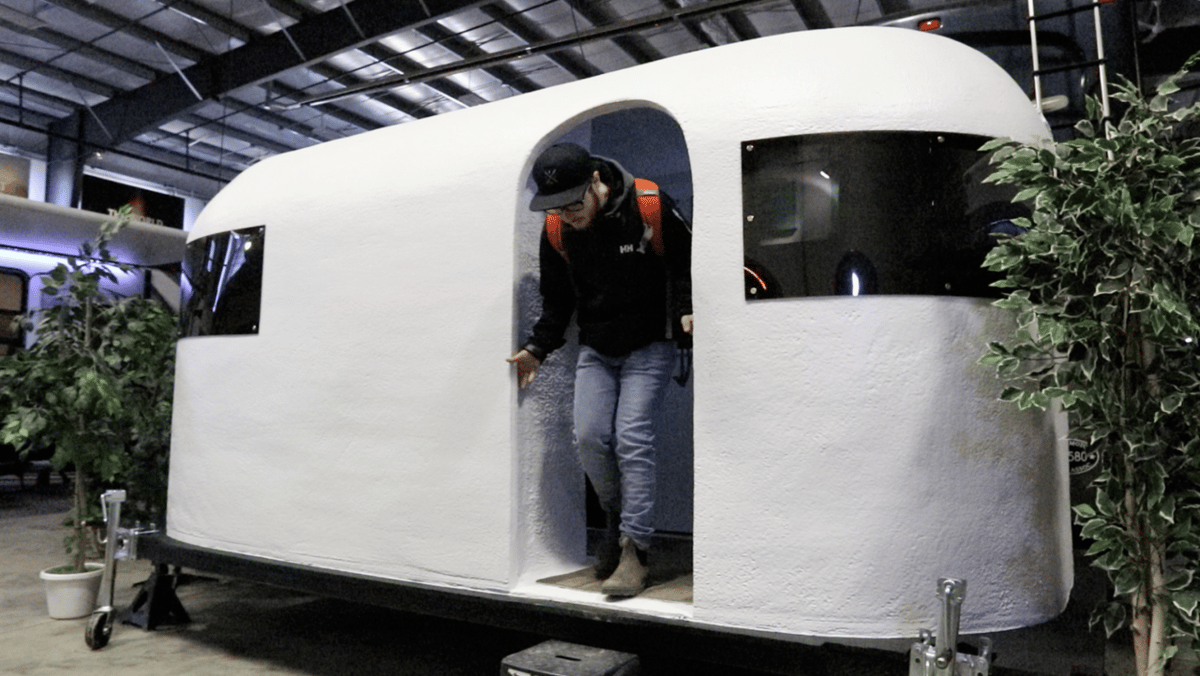
By now, you’re probably sick of hearing about 3D printed houses, but what about 3D printed campers? In the Canadian city of Saskatoon, a man called Randy James saw the potential for 3D printing campers and turned it into a reality.
The Wave was made in a collaboration with Saskatchewan Polytechnic and measures 13 feet in length and 600 pounds in weight. It broke the record for the largest single indoor 3D print and was printed on the largest indoor 3D printer in North America.
Randy calls his company Wave of the Future because he believes 3D printing indeed brings a new wave of innovation into manufacturing.
The entire printing process was broadcasted on Facebook, hosted at a Create Café 3D Printing Solutions Inc workshop.
Record-Winning Aerospace Tool
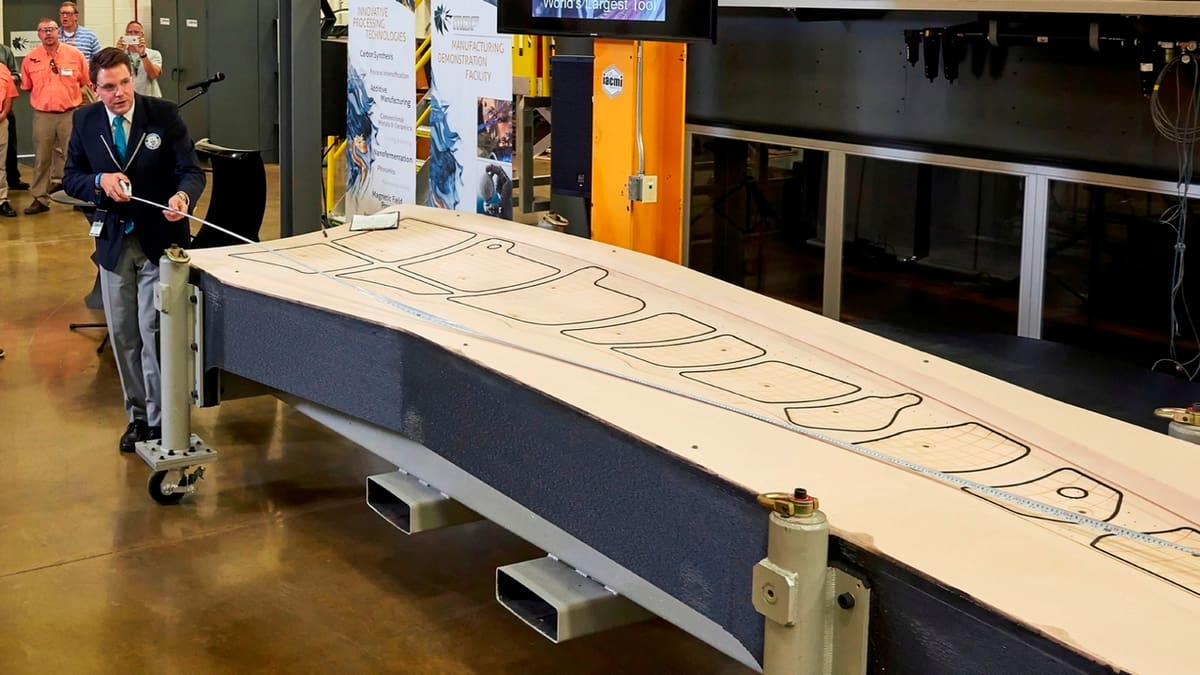
In 2016, Oak Ridge National Laboratory produced a 3D printed aerospace tool in collaboration with Boeing, and it’s so big that it set the Guinness World Record for the largest 3D printed object.
The trim-and-drill tool aids wing production for the Boeing 777x, a successor to the popular 777 jet passenger aircraft. It was printed in a single piece on a massive custom-made FDM 3D printer using ABS plastic reinforced with carbon fiber.
The piece measures 17.5 x 5.5 x 1.5 ft and weighs 1650 lbs (or 748 kg)! The print time for the tool was 30 hours, which is actually extremely quick for a such a massive part.
Prudence the Golfer
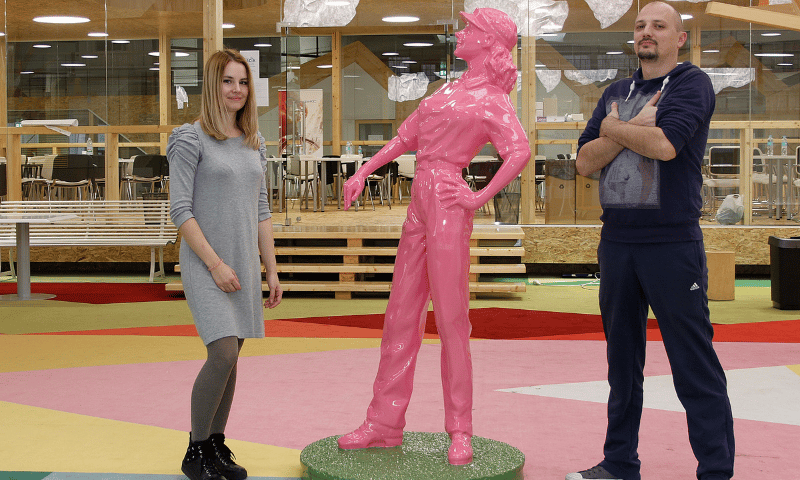
In Croatia, there aren’t many companies who specialize in 3D printing. Rising above is a company called Mikrotvornica, who managed to produce a female golfer sculpture measuring 190 cm in height and around 18 kg in weight!
Her name is Prudence and she was made for the Abigail O’Brien’s exhibition in Dublin.
Prudence was produced on an FDM 3D printer developed by Mikrotvornica. She consists of 21 parts printed using PLA plastic.
After printing, all 21 parts were glued together, sanded and painted to get that shiny new golfer look. In person, Prudence really is something to behold. The thing that amazes most is the sheer height of the sculpture, and that coupled with the fact that it was printed using FDM!
Bugatti's Titanium Brake Caliper
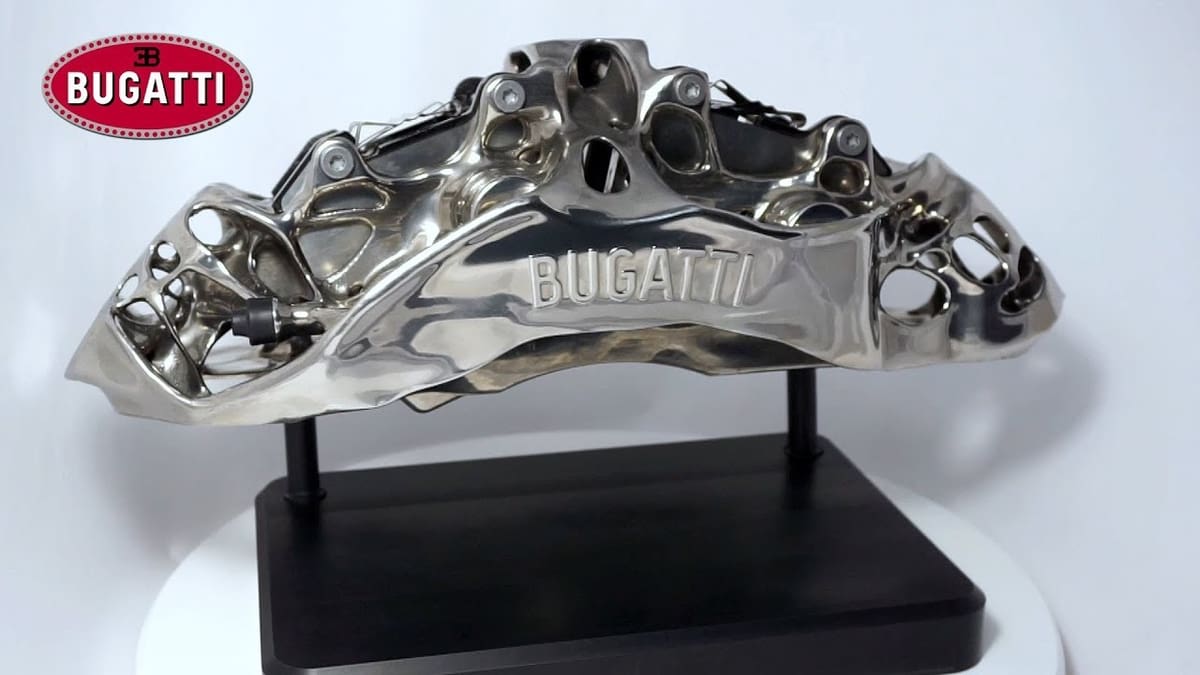
It may not compare in size to some of the other 3D prints in this list, but this brake caliper from Bugatti is still hugely impressive given its titanium construction was 3D printed in a single run using an SLS 3D printer.
Bugatti claims that the part, designed for the Chiron hypercar, is the world’s largest functional component produced from titanium using additive manufacturing. This milestone in innovation was achieved in Bugatti’s collaboration with Laser Zentrum Nord of Hamburg.
The caliper measures 41 x 21 x 13.6 cm and weighs 2.9 kg (a huge improvement over the standard 4.9-kg aluminum component).
Bugatti’s budget and staff allow them to lead innovations that should eventually spread to other members of the VW Group, such as Audi and Lamborghini. The hope is that this results in a massive step forward for the whole 3D printed automotive sector.
If you’re in London and want to see this amazing 3D printed brake caliper, head to Berkeley Square and take a closer look at Bugatti’s showroom. If you’re lucky, you’ll find the 3D printed caliper exhibited in a glass box!
Beijing's Two-Story Villa

By now, there are many examples of 3D printed buildings, all of which qualify as some of the biggest 3D printed things.
Nevertheless, a particularly impressive example comes from Chinese company HuaShang Tengda. They managed to 3D print a two-story villa on-site in just 45 days using their own concrete 3D printing hardware.
To put the magnitude of the project into perspective, let’s just say that 20 tons of concrete were used during construction!
Apart from the size, what makes this project special is the building technique. Usually, when a company 3D print a building, they do so by depositing concrete layer-by-layer until the structure is complete. But HuaShang Tengda uses a different method, first erecting the frame of the building and then laying the concrete over top.
Sofa So Good
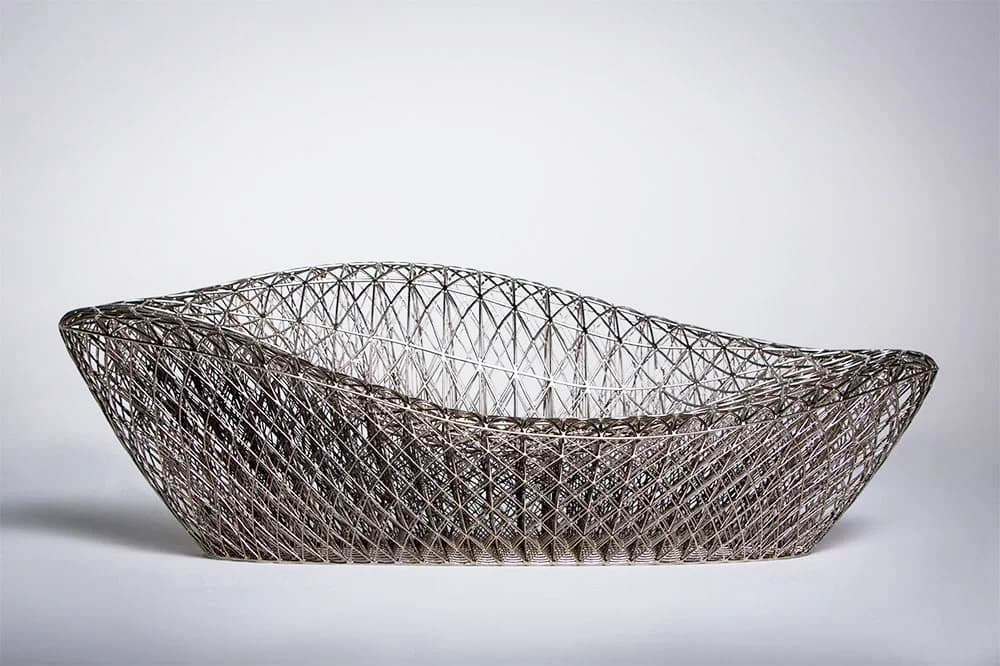
We’ve taken a look at a lot of FDM 3D prints, but what about SLA? Well, what you see above is a full-size lounger that was 3D printed on 3DSystems’s ProX 950 industrial SLA 3D printer.
To date, Sofa So Good is the biggest single piece 3D printed on an SLA 3D printer!
The lounger was created using only 2.5 liters of resin and was later coated in chrome and high polish copper to enhance its strength and aesthetics.
Sofa So Good measures 1.5 x 0.75 x 0.55 m, and weighs only 2.5 kg. It was designed by Janne Kytannen and is a perfect example of how SLA can be used to achieve prints that are clean and complex in geometry. That’s especially impressive given that the design didn’t require supports.
Local Motors' Strati and Olli

Local Motors is a famous name when it comes to 3D printed vehicles. The company’s first project was Strati, a small electric car that features a fully 3D printed one-piece shell.
The shell of the car is, as you can imagine, a rather big part. It was printed using carbon-fiber-reinforced ABS on the BAAM, a large volume 3D printer developed by Cincinnati Incorporated.
Since its inception, the printing time has been reduced to just 45 hours thanks to continued work at the Oak Ridge National Laboratory.
Apart from Strati, Local Motors recently unveiled Olli, a 3D printed shuttle. Olli’s shell is also 3D printed in one piece on a large volume plastic 3D printer.
Although 3D printing won’t replace the current car production processes, the Strati and the Olli are definitely interesting projects leading the way for additive manufacturing in the automotive sector.
Shanghai's ASA Pedestrian Bridge
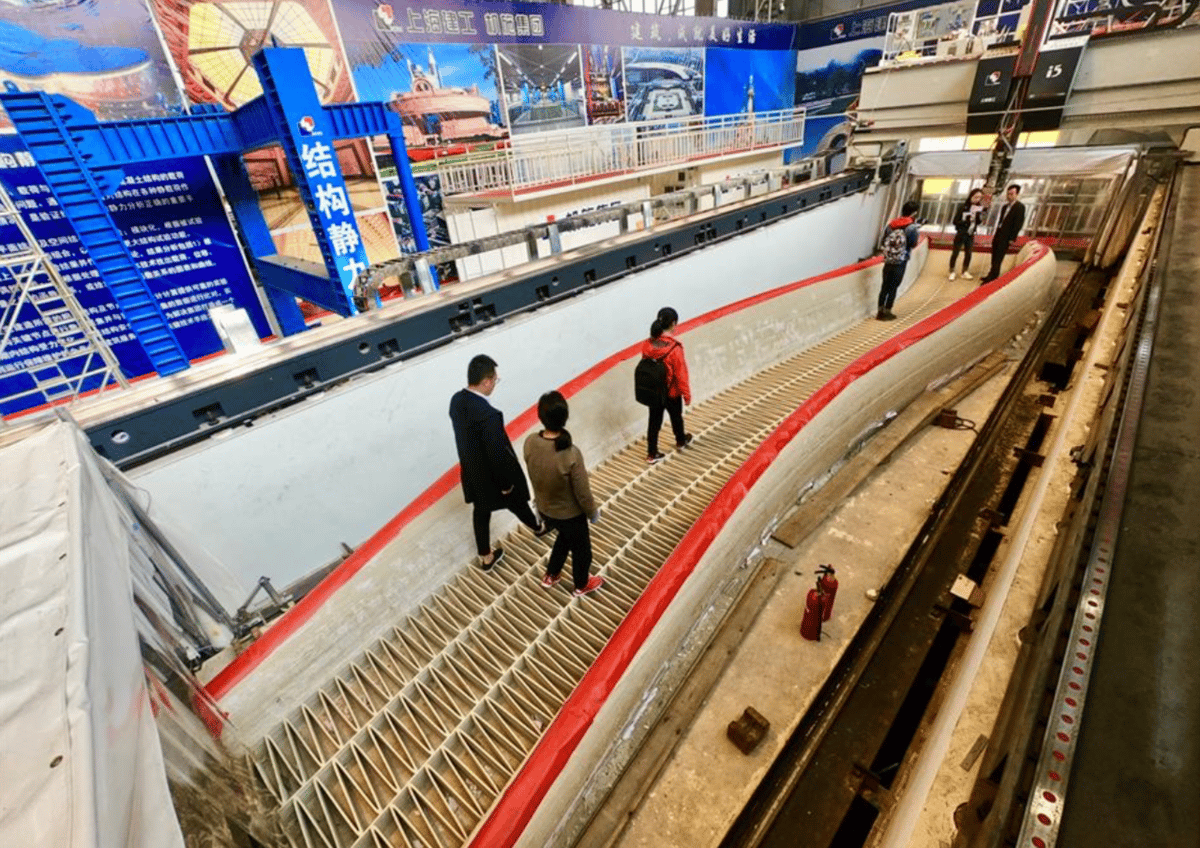
Shanghai Mechanized Construction (SMC) is a well-known company within the construction sector. They took part in making the Shanghai tower and in boring Shanghai’s underground infrastructure.
Next up on their list is a single-piece 3D printed bridge, to be installed in a Shanghai downtown park. The bridge, printed in plastic, is the result of collaboration between SMC and Polymaker.
As of right now, the printer used to produce the bridge is the world’s largest plastic 3D printer, with a build space of 144 m³. The final printed bridge will weigh 5.8 tons and be 15.25 meters long, 3 meters wide, and 1.2 meters high.
The primary material used for the production of the bridge is acrylonitrile styrene acrylate (ASA). Yet, 12.5% of the structure consists of glass fibers, which enhance its mechanical properties and help reduce the potential to warp.
Another cool fact about this project is the way the bridge is kept warm all throughout production. Because the bridge is fairly long, heated blankets are used to prevent unwanted thermal expansions as well as to protect the structure from dust.
Mother of All Fidget Spinners
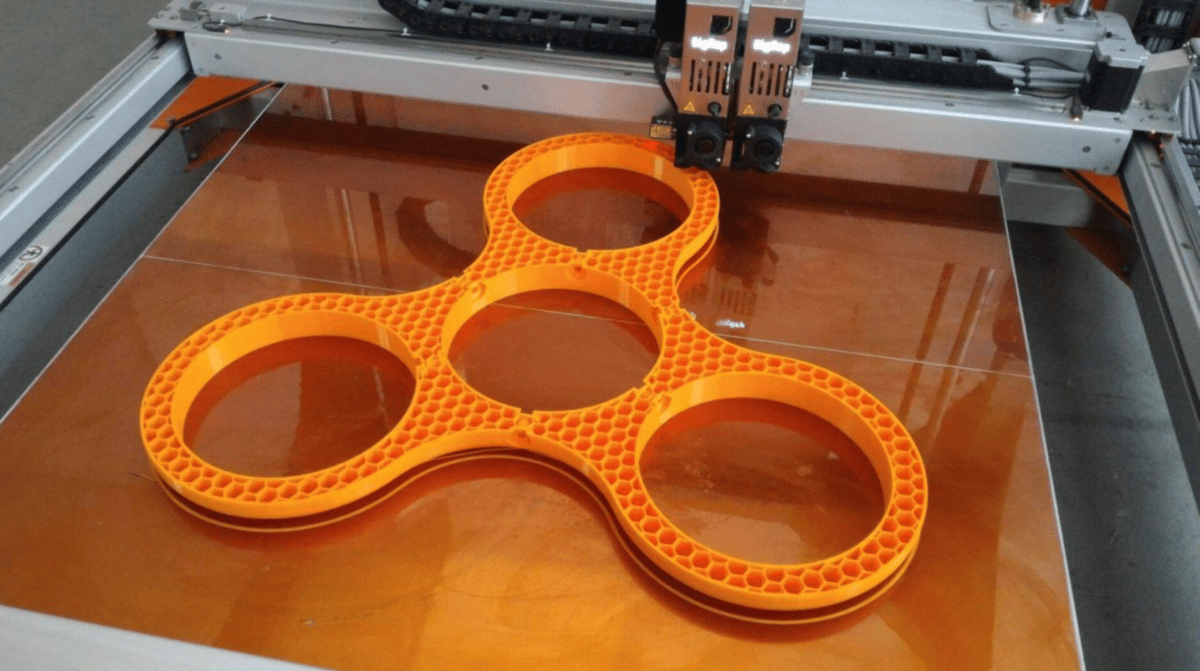
Last year, we collaborated with BigRep to create a giant fully 3D printed fidget spinner. As fidget spinners were extremely popular last year, what better way to showcase a printer’s capabilities than this?
The toy was 3D printed using BigRep’s ONE, which has an incredible build volume of 1 m². To make things even more interesting, BigRep’s 3D printing specialist suggested to 3D print the bearings, and so we did!
Because the bearings were 3D printed, the balls were directly manufactured inside the housing, which is a very cool detail. It took 30 hours to 3D print the fidget spinner’s body and 20 hours for the bearings.
Just for fun, BigRep team members took the fidget spinner to the center of Berlin to see people’s reactions.
The WAAMpeller
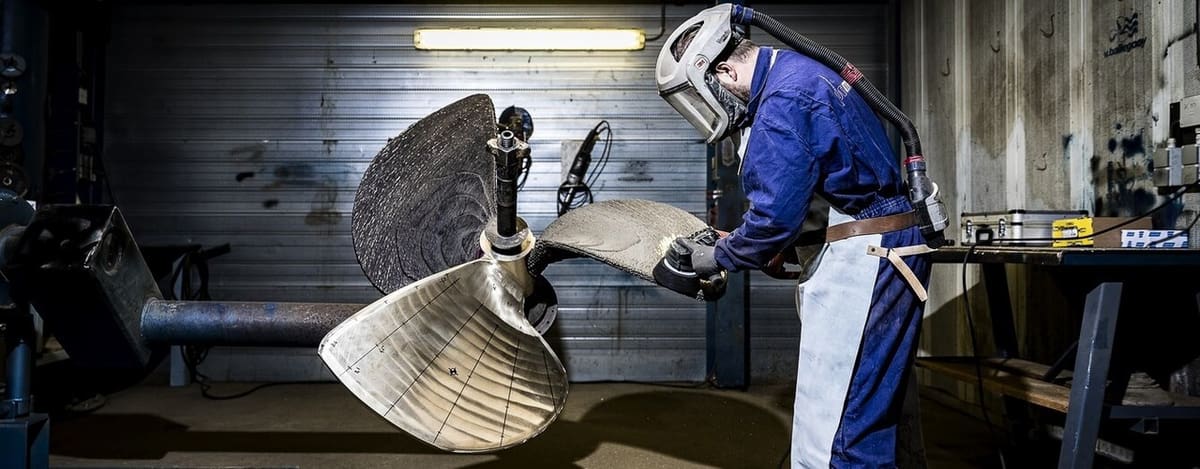
The WAAMpeller is the world’s first 3D printed ship propeller. Of course, the sheer size of the thing is what impresses us the most. The WAAMpeller is a result of a collaboration between Promarin, Autodesk, RAMLAB, Bureau Veritas, and Damen.
First things first, why is it even called the WAAMpeller? The answer lies in RAMLAB’s production techniques, which they call wire arc additive manufacturing (WAAM).
WAAM utilizes an electric arc to melt metal wire, therefore creating the parts layer by layer. The final result is a propeller made of 298 layers of nickel aluminum bronze alloy.
Autodesk’s role was to support RAMLAB with powerful software, while Promarin provided the initial design of the propeller. It was then verified by a national certification agency, Bureau Veritas, and was unveiled at Damen Shipyard’s HQ in the Netherlands.
After the certification process was complete, the WAAMpeller was mounted on Damen’s workboat, the Stan Tug 1606.
Thanks to this project, additive manufacturing has made its way into the maritime sector. We look forward to seeing more projects like the WAAMpeller!
The Light Rider
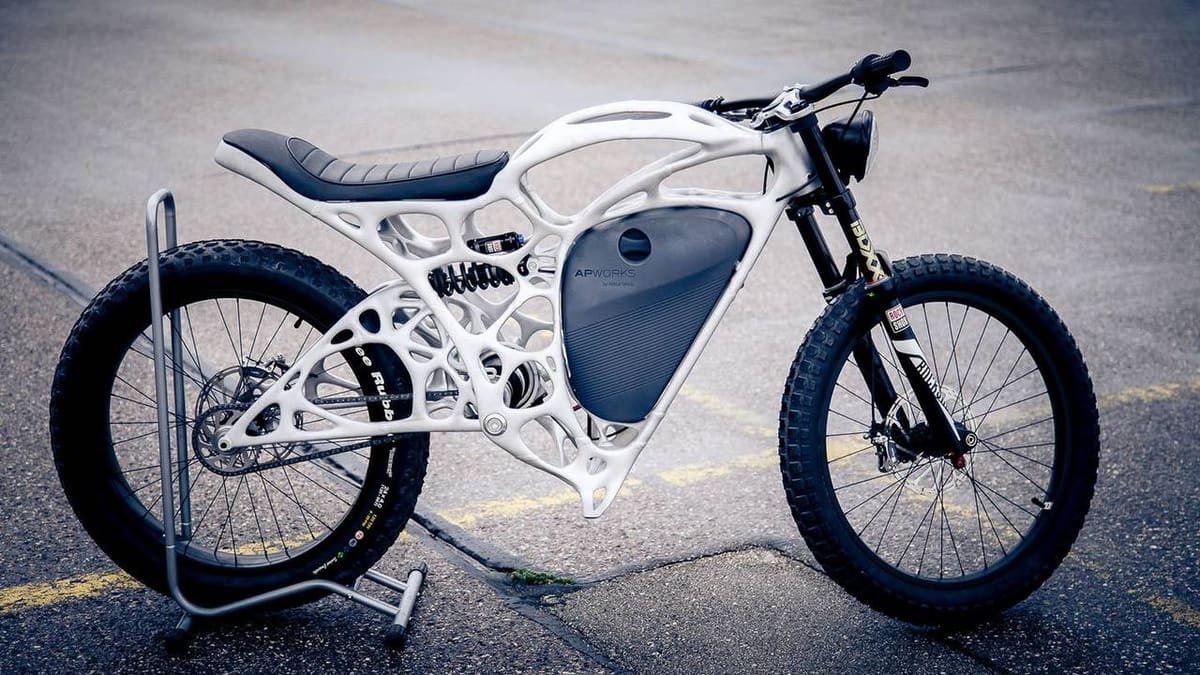
The Light Rider is, as its creators claim, the first 3D printed electric motorcycle. However, to be completely honest, it’s more of an e-bike with a powerful electric motor.
APWorks is a German additive manufacturing company owned by Airbus and is responsible for the production of the Light Rider’s 3D printed frame. It was created with an SLS 3D printer using a unique aluminum alloy powder.
Although the bike’s frame wasn’t produced in a single piece, its parts are still impressive. All of them feature a “bionic” design, which uses the smallest possible amount of material to achieve the greatest structural strength.
The Light Rider weighs 77 lbs and reaches a top speed of 49.6 mph thanks to a 6 kW e-motor, which offers 37 mi of range.
One of the reasons APWorks created the bike was to showcase work in the field of additive manufacturing. They’re planning to make 50 Light Riders available for purchase, with each costing around $56,000.
Aeon 1 Rocket Engine
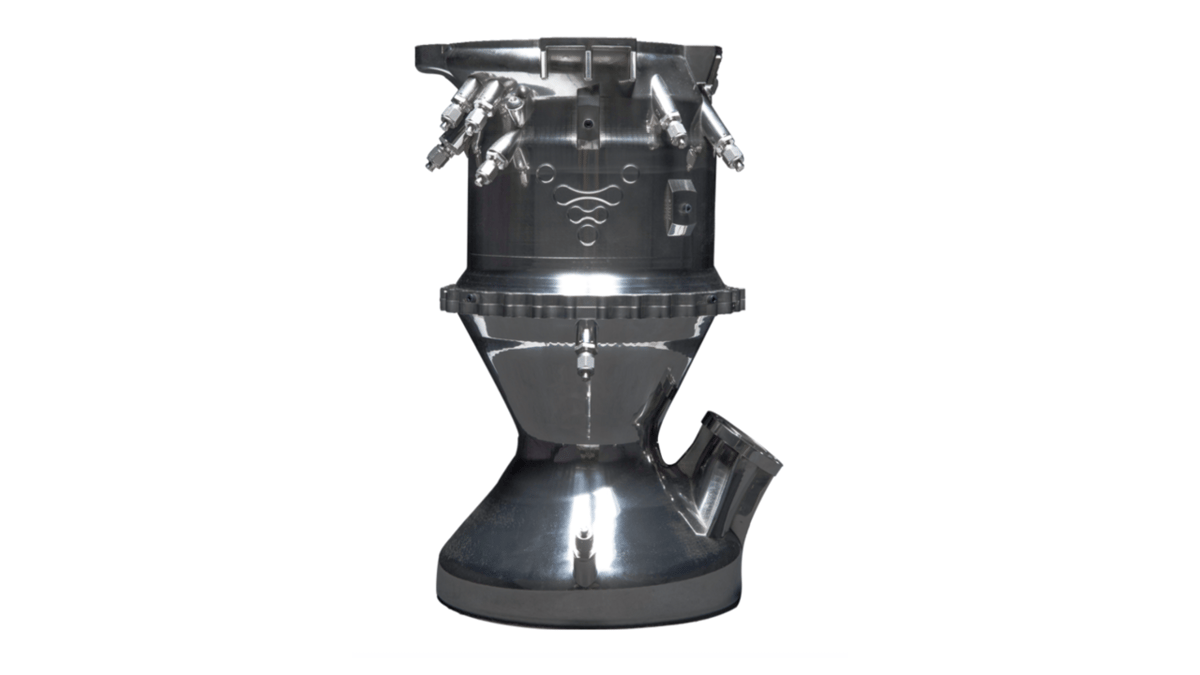
Relativity Space, a young LA-based space startup, has successfully 3D printed a metal rocket engine, the Aeon 1.
What’s special about the rocket is the number of parts it’s made of. Usually, rocket engines are assembled from a large number of parts, but the Aeon 1 consists of only three parts.
Fewer parts mean less time for production. It took only one month to produce the Aeon 1, five fewer than the typical manufacturing cycle.
To aid in production, Relativity Space developed special robotic hands, which measure up to 6 meters in height and are able to 3D print metal parts.
The company has successfully fired up and tested the engine multiple times, which deserves great applause.
Apart from reducing the build cost, Relativity Space’s goal is to reduce the overall rocket launch cost from $100 million down to only $10 million in the following three to four years.